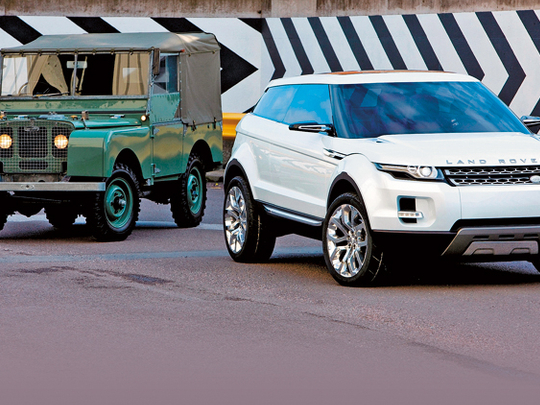
Had Maurice Wilkes, chief designer of the Rover car company, not got his hands on a Willys Jeep in the late Forties, the UAE's urban landscape would have looked completely different. It would have been devoid of one of its defining elements — the Range Rover.
Maurice fell totally in love with the Jeep, and thoroughly enjoyed driving around his farm in it whenever he could. But, there was a problem. If something went wrong with his favourite set of wheels, it would be near impossible to find parts in England. The prospect of having to live without his Jeep was unthinkable, and he decided to find a way around it — by building his own. Along with his brother Spencer, who was then general manager at Rover, he started work on a utility vehicle, mainly aimed at farmers. More than anything else, it was envisioned as a replacement for the horse for farm duties.
Thus was born the Land Rover Series 1, which was shown to the public at the Amsterdam motor show in 1948. Purely utilitarian, the first Land Rover was a far cry from today's über luxury SUVs and was just a boxy four-wheel drive vehicle. But its ruggedness and extraordinary capabilities off road soon gave it a totally new dimension.
The horizons widened and what was intended to be a farmland workhorse was now seen as the ultimate companion for exploring terrain that was previously inaccessible. It kick-started a new culture of off-roading, not just in England, but all over the world. To prove its reliability, an overland expedition was organised in late 1955, which saw two Series 1 Land Rovers tackling 29,000km of impossible terrain in more than six months to travel from London to Singapore.
Although the Series 1 was popular, there was one major impediment to it being embraced by families; the lack of creature comforts, which led to the perception that it wasn't family-friendly. Thus in 1958, the Series 2 was introduced, which was a little more refined than its predecessor.
But the first real civilised Land Rover that was at home both in the city and the countryside was the Range Rover, which debuted in 1970 with a V8 engine and permanent four-wheel drive. The Range Rover became an instant rage, and in no time became the automotive icon that it is today. It captured everyone's imagination, and was even displayed at the Louvre Museum in Paris as automotive art.
In 1983, the Land Rover 90 and the Land Rover 110 were introduced, the numbers signifying the wheelbase in inches. Based on the original, these are still in production in the form of the Defender.
From the scorching Sahara to freezing Alaska and the rainforests in South America, there was literally no place in the world that a Land Rover couldn't reach. Many rallies and expeditions proved this time and again, most notably the famous Camel Trophy, which was termed the Olympics of off-roading.
In 1987, Land Rover did the unthinkable in taking on the Jeep on its own terrain by enticing Americans with a loaded Range Rover with features and technology never before seen in a utility vehicle. The premium SUV was born, and was now a lifestyle choice, paving the way for an explosion in this niche, with almost every premium carmaker venturing into this segment. In 1989, Land Rover launched the Discovery, a smaller SUV aimed at younger, less conservative customers, who were being attracted to Japanese competition led by the Toyota Land Cruiser. This was followed in 1997 by the Freelander mini SUV.
After falling on hard times by the late Nineties, the marque changed hands many times from BMW to Ford and finally to India's Tata Motors. Regardless of who owns it, there's one truth about Land Rover that will never change — it opened up a whole new world for the explorer, and will always remain an icon as long as man has the urge to go beyond the beaten track.











